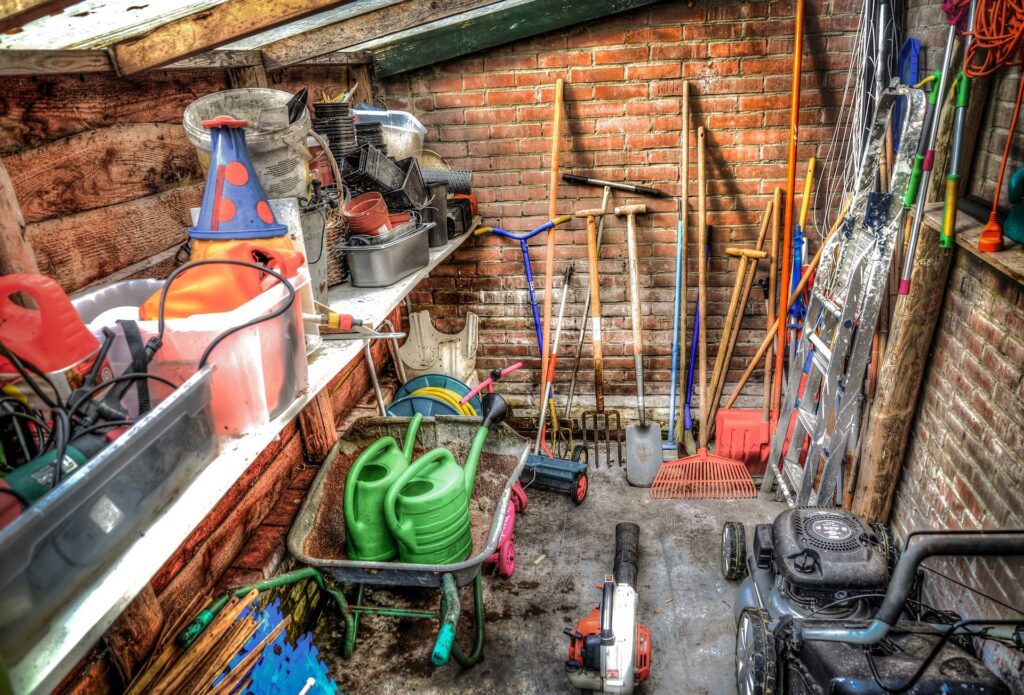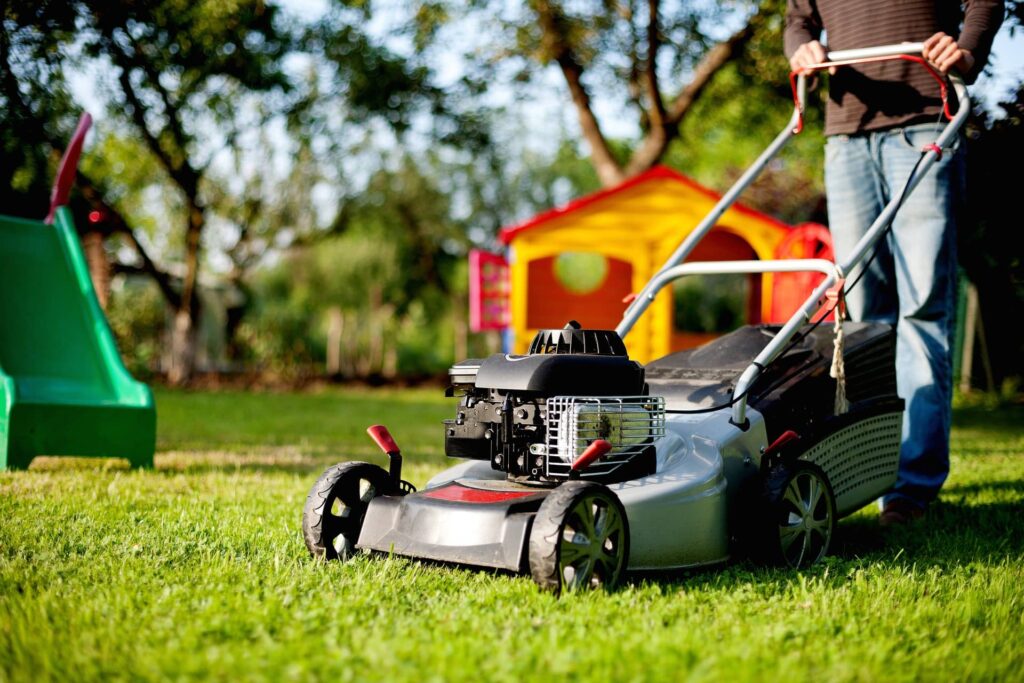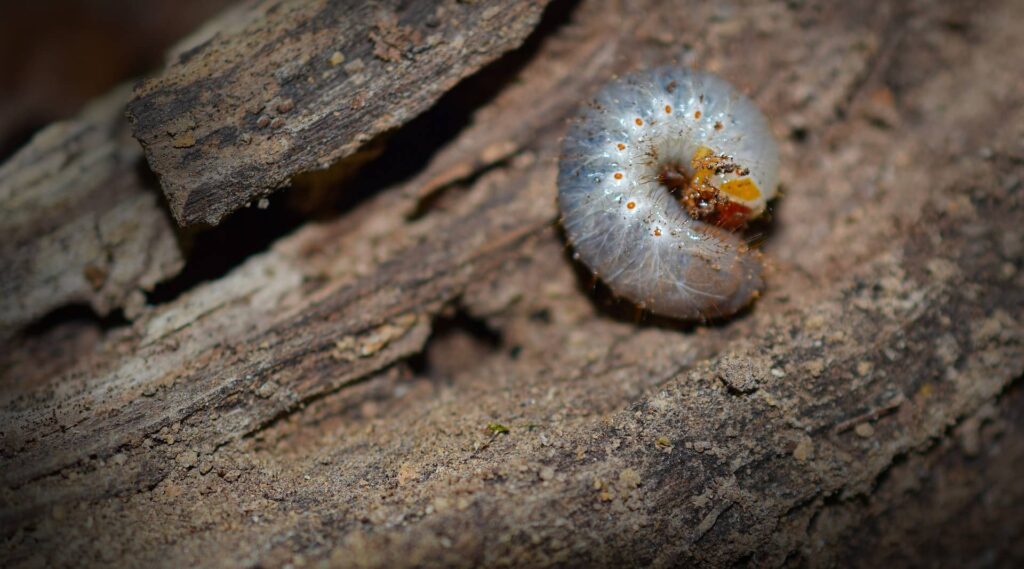As a new homeowner, you’ve just unlocked an exciting chapter in your life. Along with the joys of owning your first home comes the responsibility of maintaining your very own lawn. Don’t worry if you’re feeling a bit overwhelmed – this comprehensive guide to lawn care for new homeowners will equip you with all the knowledge you need to nurture a lush, healthy yard that’ll be the envy of the neighborhood.
I. Introduction: Welcome to the World of Lawn Care
Stepping onto your own patch of green for the first time is a thrilling experience. That expanse of grass isn’t just a decorative feature; it’s an extension of your home and a reflection of your care. Proper lawn care does more than boost your curb appeal – it carries on the rich history of lawn care. It also creates an inviting outdoor space for family gatherings, improves air quality, and can even increase your property value.
In this guide, we’ll walk you through everything you need to know about lawn care for new homeowners. From understanding your grass type to mastering seasonal maintenance, you’ll learn how to tackle common lawn problems and cultivate a yard that thrives year-round.
II. Understanding Your Lawn: The Foundation of Effective Care
Before you dive into lawn care tasks, it’s crucial to understand what you’re working with. This foundation will inform all your future lawn care decisions.
A. Identifying Your Grass Type
Different grass types thrive in different climates and require specific care. Here’s a quick guide to common grass types:
| Grass Type | Climate | Characteristics |
|---|---|---|
| Kentucky Bluegrass | Cool-season | Dark green, fine texture |
| Bermuda | Warm-season | Coarse texture, drought-resistant |
| Fescue | Cool-season | Shade-tolerant, clumping growth |
| St. Augustine | Warm-season | Coarse texture, salt-tolerant |
To identify your grass, observe its texture, color, and growth patterns. You can also consult local garden centers or extension offices for help.
B. Assessing Your Soil Quality
Healthy soil is the bedrock of a vibrant lawn. Conduct a soil test to determine your soil’s pH and nutrient levels. Most grasses prefer a slightly acidic soil with a pH between 6.0 and 7.0. You can purchase a home soil testing kit or send a sample to a local extension office for a more detailed analysis.
C. Recognizing Common Lawn Problems
New homeowners should familiarize themselves with these common lawn issues:
- Bare patches: Could indicate pest damage, soil compaction, or dog urine spots.
- Yellow or brown grass: Might signal drought stress, over-watering, or nutrient deficiencies.
- Mushrooms: Often a sign of organic matter decomposition, usually harmless to the lawn.
- Weeds: Indicate favorable growing conditions that opportunistic plants are exploiting.
III. Essential Tools for New Homeowner Lawn Care

Equipping yourself with the right tools is crucial for effective lawn care. Here’s what you’ll need:
A. Must-have Equipment for Basic Maintenance
- Lawn mower: Choose between push mowers, self-propelled models, or riding mowers depending on your lawn size.
- Edger or string trimmer: For neat edges along sidewalks and driveways.
- Rake: Essential for leaf removal and lawn cleanup.
- Sprinkler or irrigation system: To keep your lawn hydrated.
- Fertilizer spreader: For even application of lawn food.
B. Optional Tools to Consider
As you become more comfortable with lawn care, you might want to invest in:
- Aerator
- Dethatcher
- Leaf blower
- Pruning shears
C. Proper Tool Care and Storage
Remember, well-maintained tools last longer and perform better. Clean your tools after each use, sharpen blades regularly, and store them in a dry place to prevent rust.
IV. Seasonal Lawn Care Calendar for Beginners
Effective lawn care for new homeowners follows the rhythm of the seasons. Here’s a breakdown of key tasks throughout the year:
A. Spring Lawn Care Tasks
- Rake: Remove dead grass and winter debris.
- Soil test: Assess nutrient needs after winter.
- Overseed: Fill in bare patches.
- Fertilize: Apply a spring-formula fertilizer.
- Mow: Begin regular mowing as grass starts growing.
B. Summer Lawn Maintenance
- Water deeply: Especially during dry spells.
- Mow regularly: But avoid cutting more than 1/3 of grass height.
- Control weeds: Remove or treat as they appear.
- Watch for pests: Address any insect issues promptly.
C. Fall Lawn Preparation
- Aerate: Improve soil compaction and nutrient absorption.
- Fertilize: Apply a fall-formula fertilizer.
- Overseed: Ideal time for cool-season grasses.
- Rake leaves: Prevent smothering of grass.
D. Winter Lawn Protection
- Final mow: Cut grass slightly shorter for the last mow of the season.
- Clean up: Remove all debris before snow falls.
- Winterize equipment: Clean and store tools properly.
- Limit foot traffic: Avoid walking on frozen grass.
V. Mowing 101: The Cornerstone of Lawn Care

Proper mowing is perhaps the most crucial aspect of lawn care for new homeowners. It’s not just about keeping your grass short; it’s about promoting healthy growth and resilience.
A. Proper Mowing Techniques
- Mow when grass is dry: Wet grass can clump and clog your mower.
- Change direction: Alternate your mowing pattern to prevent ruts and promote upright growth.
- Leave clippings: They return nutrients to the soil (unless they’re excessively long).
- Keep blades sharp: Dull blades tear grass, making it more susceptible to disease.
B. Ideal Mowing Height for Different Grass Types
| Grass Type | Ideal Mowing Height (inches) |
|---|---|
| Bermuda | 0.5 – 1.5 |
| Fescue | 2.5 – 3.5 |
| Kentucky Bluegrass | 2.5 – 3.5 |
| St. Augustine | 2.5 – 4 |
C. Mowing Frequency: Finding the Right Balance
The “one-third rule” is a good guideline: never remove more than one-third of the grass blade length in a single mowing. This might mean mowing more frequently during peak growing seasons and less often during slower periods.
VI. Watering Wisdom: Keeping Your Lawn Hydrated
Proper watering is a cornerstone of lawn care for new homeowners. It’s not just about how much water you use, but when and how you apply it.
A. Signs Your Lawn Needs Water
- Grass blades folding in half
- Footprints remaining visible after walking on the lawn
- Grass taking on a blue-gray tint
B. Best Practices for Efficient Watering
- Water deeply and infrequently: This encourages deep root growth.
- Water early in the morning: Reduces water loss due to evaporation.
- Use sprinklers or irrigation systems: For even coverage.
- Adjust for rainfall: Reduce watering after significant rain.
C. Dealing with Drought Conditions
During drought, focus on keeping your lawn alive rather than lush:
- Water less frequently but more deeply
- Allow grass to go dormant if necessary
- Consider drought-resistant landscaping options
VII. Feeding Your Lawn: Fertilization Basics
Understanding fertilization is crucial for new homeowners eager to maintain a healthy lawn.
A. Understanding Fertilizer Numbers
Fertilizer bags display three numbers, representing the N-P-K ratio:
- N (Nitrogen): Promotes leaf growth and green color
- P (Phosphorus): Supports root development
- K (Potassium): Enhances overall plant health and stress resistance
B. Choosing the Right Fertilizer for Your Lawn
Select a fertilizer based on your soil test results and grass type. Generally:
- Spring: High nitrogen for leaf growth
- Summer: Balanced formula
- Fall: Higher potassium for winter hardiness
C. Application Techniques and Timing
- Use a spreader: Ensures even distribution
- Water after application: Helps nutrients reach roots
- Follow package instructions: Over-fertilizing can harm your lawn
VIII. Weed Control Strategies for New Homeowners
Weeds are an inevitable challenge in lawn care, but with the right approach, new homeowners can keep them at bay.
A. Identifying Common Lawn Weeds
Some frequent invaders include:
- Dandelions
- Crabgrass
- Clover
- Chickweed
B. Prevention Methods
- Maintain a thick, healthy lawn: Crowds out weeds
- Proper mowing height: Shades soil, preventing weed germination
- Avoid over-watering: Many weeds thrive in damp conditions
C. Safe and Effective Weed Removal Techniques
- Hand-pulling: Effective for small areas
- Spot-treatment: Use herbicides sparingly and directly on weeds
- Pre-emergent herbicides: Apply before weed seeds germinate
IX. Dealing with Pests and Diseases

Even well-maintained lawns can fall prey to pests and diseases. Early detection is key to effective management.
A. Common Lawn Pests and How to Spot Them
- Grubs: Cause brown patches and spongy turf
- Chinch bugs: Lead to dry, yellow patches
- Armyworms: Rapidly consume grass blades
B. Recognizing Lawn Diseases
- Brown patch: Circular brown areas in the lawn
- Dollar spot: Small, circular patches about the size of a silver dollar
- Fusarium: Causes wilting and discoloration
C. Natural and Chemical Treatment Options
Always start with the least toxic option:
- Improve lawn health: Often the best defense
- Introduce beneficial insects: Natural predators can control pest populations
- Use organic treatments: Such as neem oil or insecticidal soaps
- Apply chemical treatments: As a last resort, following all safety guidelines
X. Aeration and Dethatching: Advanced Lawn Care Techniques
As new homeowners become more comfortable with basic lawn care, they can explore these advanced techniques to further improve their lawn’s health.
A. When and Why to Aerate Your Lawn
Aeration involves creating small holes in the soil to allow air, water, and nutrients to penetrate the grass roots.
When to aerate:
- Cool-season grasses: Early spring or fall
- Warm-season grasses: Late spring through early summer
Why aerate:
- Relieves soil compaction
- Improves nutrient absorption
- Enhances water penetration
- Strengthens root systems
B. The Importance of Dethatching
Thatch is a layer of dead grass stems, roots, and debris that accumulates between the soil surface and the living grass. While a thin layer (less than 1/2 inch) can be beneficial, excessive thatch can lead to problems.
Signs you need to dethatch:
- Spongy feel when walking on the lawn
- Difficulty pushing a screwdriver into the soil
- Brown patches that don’t respond to watering
C. DIY vs. Professional Services
While both aeration and dethatching can be DIY projects, they require specialized equipment. New homeowners might find it more convenient and effective to hire professionals for these tasks, at least initially.
XI. Landscaping Tips for New Homeowners

Enhancing your lawn with thoughtful landscaping can dramatically improve your home’s appearance and your enjoyment of outdoor spaces.
A. Incorporating Flower Beds and Shrubs
- Choose native plants: They’re adapted to your local climate and require less maintenance
- Consider bloom times: Plan for year-round color
- Mind mature sizes: Allow enough space for plants to grow
B. Creating Defined Edges and Borders
Well-defined edges give your lawn a polished look:
- Use a half-moon edger or power edger to create clean lines
- Install plastic or metal edging for a more permanent solution
- Consider adding a border of rocks or mulch for visual interest
C. Adding Hardscaping Elements
Hardscaping can add structure and functionality to your lawn:
- Pathways: Guide foot traffic and protect grass
- Retaining walls: Manage slopes and create planting areas
- Patios or decks: Create outdoor living spaces
XII. Eco-Friendly Lawn Care Practices
Modern lawn care for new homeowners often emphasizes sustainability and environmental responsibility.
A. Reducing Water Usage
- Install a rain sensor: Prevents unnecessary watering
- Use drought-resistant grass varieties: Require less supplemental water
- Collect rainwater: Use rain barrels to capture roof runoff
B. Organic Fertilizer Alternatives
- Compost: Improves soil structure and adds nutrients
- Grass clippings: Leave them on the lawn as natural fertilizer
- Coffee grounds: Rich in nitrogen and attract earthworms
C. Native Plant Integration
Incorporating native plants into your landscape can:
- Reduce water and fertilizer needs
- Provide habitat for local wildlife
- Create a unique, regionally appropriate look
XIII. Troubleshooting Common Lawn Issues
Even with the best lawn care, new homeowners may encounter problems. Here’s how to address some common issues:
A. Bare Patches and How to Fix Them
- Loosen the soil in the bare area
- Spread grass seed appropriate for your lawn type
- Lightly rake to cover seeds with soil
- Water regularly until new grass is established
B. Dealing with Lawn Discoloration
- Yellow grass: Often indicates nutrient deficiency or over-watering
- Brown spots: Could be due to pet damage, fungal disease, or insect activity
- Blue-gray tint: Usually a sign of drought stress
C. Addressing Drainage Problems
Poor drainage can lead to a host of lawn problems. Solutions include:
- Grading: Ensure the lawn slopes away from your home
- French drains: Install to redirect water
- Rain gardens: Create areas designed to capture and filter runoff
XIV. When to Call in the Pros: Lawn Care Services for New Homeowners

While many aspects of lawn care can be DIY, sometimes professional help is necessary or preferable.
A. Assessing Your Lawn Care Needs
Consider professional services if:
- You lack the time for regular maintenance
- You’re dealing with persistent problems despite your best efforts
- You need specialized treatments or equipment
B. Choosing a Reputable Lawn Care Service
- Check reviews and ask for references
- Ensure they’re licensed and insured
- Get detailed quotes from multiple providers
- Ask about their approach to eco-friendly practices
C. Cost Considerations and Budgeting
Professional lawn care costs vary widely based on:
- Size of your lawn
- Services required
- Frequency of visits
- Your geographic location
Create a lawn care budget that balances your ideal lawn with your financial comfort zone.
XV. Conclusion: Embracing Your Role as a Lawn Care Steward
As we wrap up this comprehensive guide to lawn care for new homeowners, remember that creating and maintaining a beautiful lawn is a journey, not a destination. It requires patience, learning, and a willingness to adapt your approach as you discover what works best for your unique space.
Key takeaways:
- Understand your lawn: Know your grass type and soil composition
- Follow seasonal care: Adapt your lawn care routine to the changing seasons
- Master the basics: Focus on proper mowing, watering, and fertilizing techniques
- Address problems promptly: Early intervention is key for weed, pest, and disease control
- Consider the environment: Embrace eco-friendly practices when possible
- Know when to seek help: Don’t hesitate to consult professionals for complex issues
Remember, your lawn is more than just grass – it’s an ecosystem, a relaxation space, and an extension of your home. By applying the principles outlined in this guide, you’re not just maintaining a patch of green; you’re creating a thriving outdoor space that enhances your home and your quality of life.
As you embark on your lawn care journey, don’t be afraid to experiment and learn from both successes and setbacks. With time and care, you’ll develop a deep connection with your lawn and a sense of pride in your outdoor space.
Here’s to many years of lush, healthy lawns and the joy of outdoor living in your new home!
Bonus Tips for New Homeowner Lawn Care Success
To round out our comprehensive guide, here are some additional tips to help you excel in your lawn care journey:
1. Create a Lawn Care Journal
Keep track of your lawn care activities, observations, and results. This can help you:
- Identify patterns in your lawn’s health
- Remember when you last fertilized or treated for pests
- Fine-tune your approach over time
2. Invest in a Rain Gauge
Understanding how much water your lawn receives from rainfall can help you adjust your watering schedule more effectively.
3. Consider a Soil Moisture Meter
This inexpensive tool can take the guesswork out of when to water, especially for new homeowners still getting to know their lawns.
4. Join Local Gardening Groups
Connect with experienced lawn enthusiasts in your area. They can offer region-specific advice and support.
5. Experiment with Lawn Alternatives
If you’re struggling with difficult areas, consider:
- Clover: Drought-resistant and requires less mowing
- Ornamental grasses: Add texture and interest
- Ground covers: Great for shady spots where grass struggles
6. Practice Integrated Pest Management (IPM)
This approach focuses on long-term prevention of pests through a combination of techniques such as biological control, habitat manipulation, and modification of cultural practices.
7. Be Patient and Persistent
Remember: A lush, healthy lawn doesn’t happen overnight. It’s the result of consistent care and attention over time.
“The grass is always greener where you water it.” – Neil Barringham
Case Study: The Thompson Family’s Lawn Transformation
To illustrate the impact of proper lawn care for new homeowners, let’s look at the experience of the Thompson family:
When Sarah and Mike Thompson bought their first home, the lawn was patchy, weed-ridden, and lackluster. As new homeowners, they were determined to transform their outdoor space but felt overwhelmed by the task.
Their approach:
- They started by identifying their grass type (a mix of fescue and Kentucky bluegrass) and conducting a soil test.
- Based on the results, they developed a year-round care plan, focusing on proper mowing, watering, and fertilization.
- They tackled weeds systematically, using a combination of manual removal and targeted herbicide application.
- To address bare patches, they overseeded in the fall and maintained consistent care.
Results after one year:
- The lawn showed significant improvement in density and color.
- Weed presence reduced by approximately 80%.
- Bare patches filled in with healthy grass.
Key learning: The Thompsons found that consistency was crucial. By sticking to their care plan and addressing issues promptly, they saw steady improvement throughout the year.
Final Thoughts on Lawn Care for New Homeowners
As you embark on your lawn care journey, remember that every lawn is unique. What works for your neighbor might not be ideal for your yard. Don’t be afraid to experiment, learn, and adjust your approach as you go.
Lawn care for new homeowners is about more than just maintaining a patch of grass. It’s about creating an inviting outdoor space, contributing to your local ecosystem, and taking pride in your property. With the knowledge from this guide and a willingness to learn, you’re well-equipped to cultivate a lawn that enhances your home and your life.
Key action steps:
- Start with a soil test and grass identification
- Create a seasonal care plan
- Invest in quality tools and learn to use them properly
- Address problems promptly and holistically
- Consider environmental impact in your lawn care decisions
- Don’t hesitate to seek expert advice when needed
Remember, the journey to a beautiful lawn is a marathon, not a sprint. Embrace the process, celebrate small victories, and enjoy the satisfaction that comes with nurturing your very own piece of nature.
Happy lawn care, new homeowners! May your grass be ever green and your outdoor dreams come true.


